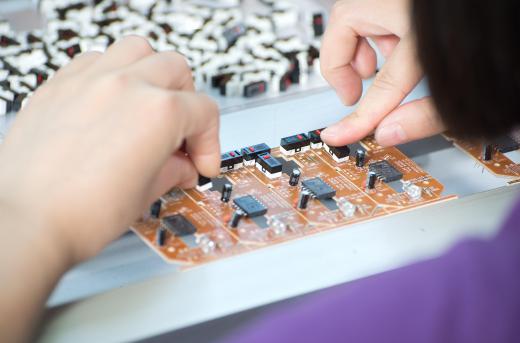A through hole is any hole that passes through something, whether it is milled or drilled using hand tools or sophisticated machinery. The most common type is the plated hole that is used in printed circuit board (PCB) manufacturing. Plating the hole makes it easier for electrical signals to be transmitted along the PCB, but a through hole does not have to be plated if it is going to be used for mounting other hardware.
These holes are used for installing various components onto a circuit board, such as capacitors or any type of component that is inserted with pins. The ends of these parts are joined to pads on the PCB’s bottom side during the through hole soldering process, which is a molten metal solder procedure that involves the use of wave soldering or reflow soldering equipment. This type of mounting is beneficial because the resulting mechanical bonds are stronger than with other techniques, such as surface mounting.

Through hole design does result in more expensive boards because of the drilling required, and it limits the total area of the PCB for routing signal traces. With multilayer boards, this is a problem because the holes pass through all layers of them. Placing the holes too close together can create problems in how signals are transmitted from one end of the board to the other.
A through hole on a PCB must have various other components to ensure that the integrity of signals is not affected. The capture pad, placed on the board’s outer or inner layers on the outside of the hole, connects the traces to the plated through hole so that connections to other components can be made. Other elements include a copper ring that is larger than the hole shadow, known as the annular ring, which is where the through hole passes through each layer of the board. The finished hole diameter defines the size of the actual drilled hole, while the drilled hole diameter reflects the size of the hole plus copper plating compared to the board space taken up.
Manufacturers of PCBs use computer aided design (CAD) software to accurately model and create each through hole. The hole, capture pad, drill size, and plating are referred to in this software as a pad stack. These elements are designed using complex calculations to make sure the circuits are manufactured correctly and function as they are intended to.

